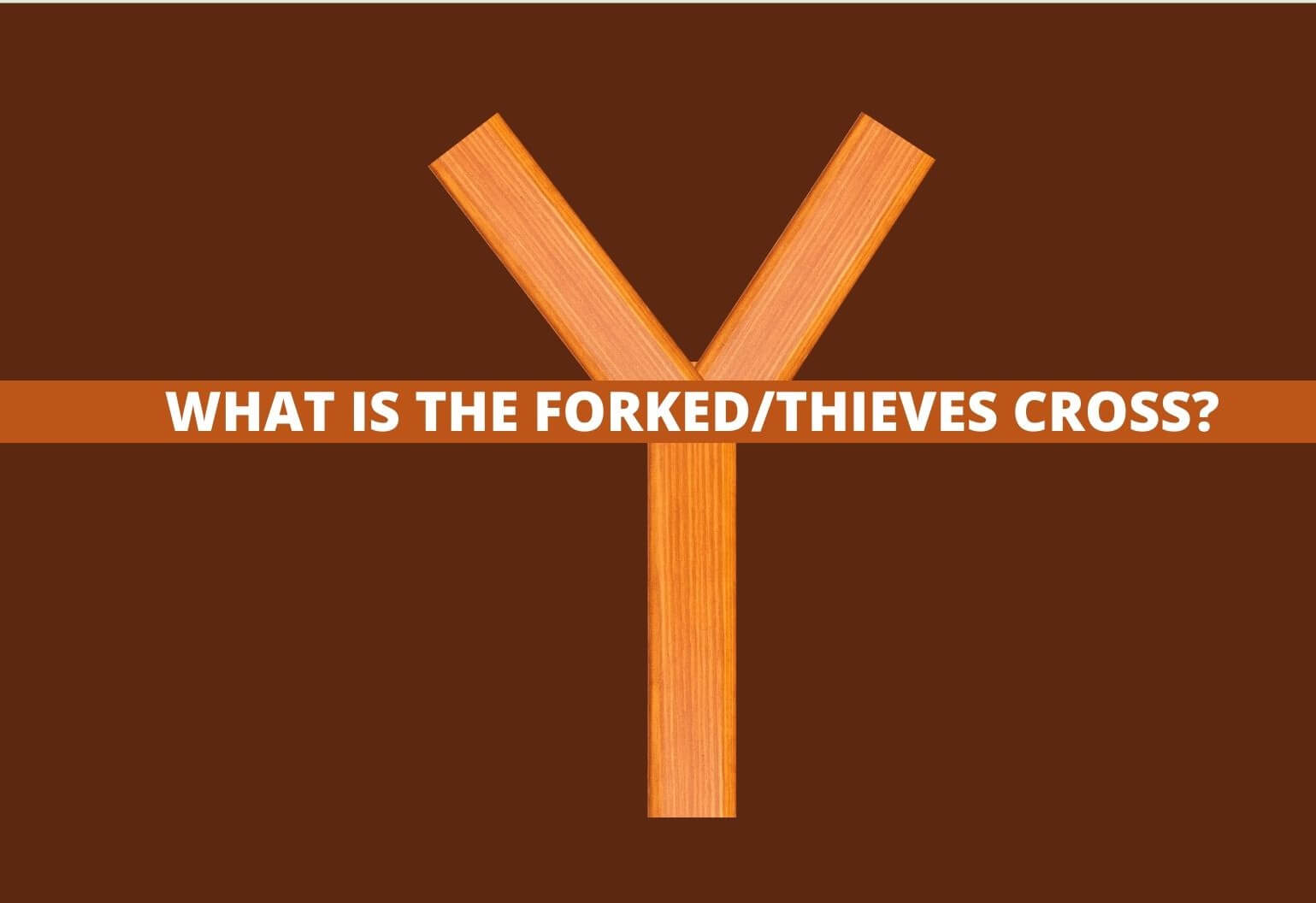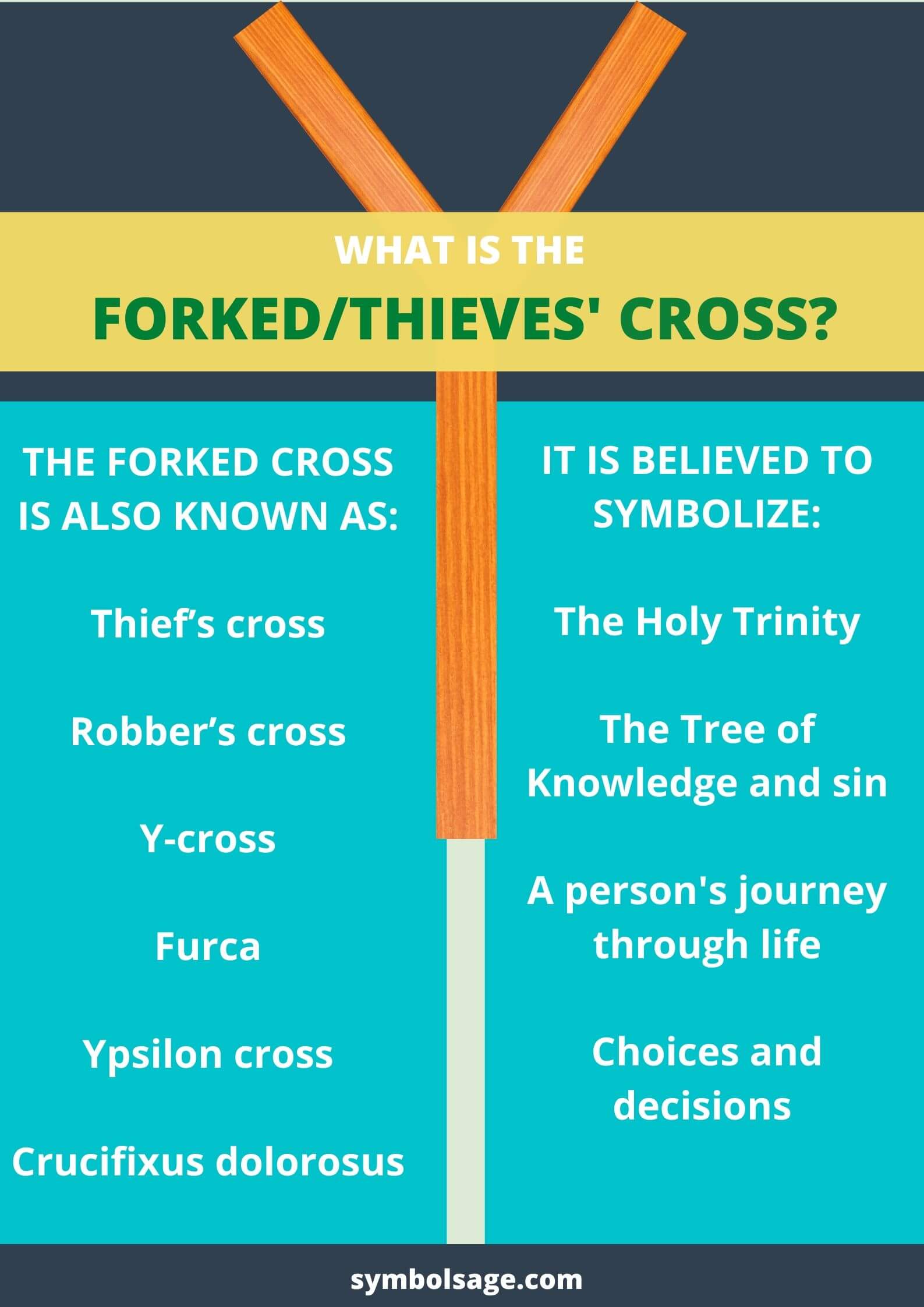
Table of Contents
The thieves’ cross, also known by several other names, can be seen in Christian artwork. The symbol itself dates back to the early 13th century, but there is some confusion over its exact origins. Here’s a look at the history and symbolic meaning of the forked cross.
What is the Forked Cross?

The thieves’ cross is known by many names:
- Thief’s cross
- Robber’s cross
- Y-cross
- Furca
- Ypsilon cross
- Crucifixus dolorosus
All these names refer to the same style of cross – a Gothic, Y-shaped cross. It’s believed that during Roman times, thieves and robbers were crucified on such crosses. However, there’s no irrefutable evidence that suggests that this is true. Unlike a straight beam cross, a forked cross requires more effort and expense to construct. Why would the Romans do that for no apparent reason?
Instead, many historians believe that the forked cross is a more recent creation, emerging during the 13th to 14th century as a product of mysticism.
During this period, there was a shift towards focusing on the Passion of the Christ. Artists would portray the suffering of Jesus on the cross in graphic detail, outlining his emaciated body, suffering expression, wounds, and blood, with arms stretched upwards and nailed onto a forked cross.
The idea was to terrify believers and reinforce their faith. Some artwork feature Jesus on a regular straight beam cross with the two thieves who were crucified alongside him on Calvary depicted on forked crosses. This is where the forked cross gets its association with robbers and thieves.
Meanings of the Forked Cross
There are several interpretations of the forked cross, most from a religious perspective.
1. The Holy Trinity
The three arms of the forked cross can be a representation of the Holy Trinity – the Father, the Son and the Holy Ghost.
2. Tree of Knowledge
Some believe that the thieves’ cross represents a tree. In a Christian context, this can be considered the Tree of Knowledge, which was the reason sin entered the world in the first place.
A criminal being crucified on a forked cross was symbolic of how sin was the reason this act was taking place. However, Jesus’ crucifixion and suffering are metaphorical of the victory over sin.
3. Life’s Journey
A more secular interpretation of the forked cross is a representation of a person’s journey through life. The letter upsilon in the Greek alphabet is a Y-shaped character in uppercase, added by Pythagoras to the alphabet.
From a Pythagorean standpoint, the symbol represents a person’s journey in life, from the bottom through to their adolescence and finally to the intersecting point. At these crossroads, they must choose to travel right on a path of virtue or left towards ruin and vice.
A fork has always been a metaphor for two possible options, choices, and paths in life, and the forked cross could be a representation of this.
In Brief
As a symbol, the forked cross, like many other depictions of the cross (some examples are the Celtic cross, the Florian cross and the Maltese cross) has strong associations with Christianity. However, today it’s not as commonly used as it was in the Middle Ages. It remains a symbol of Christian beliefs, evoking the crucifixion of Jesus and the deeper underlying messages.









